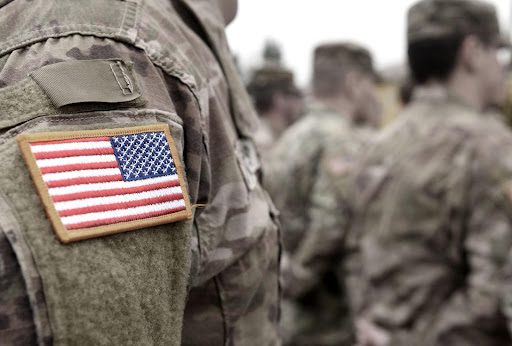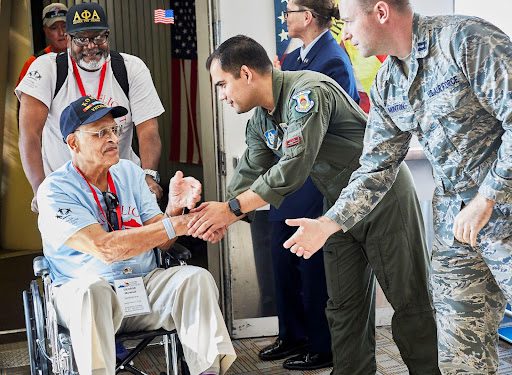Post-traumatic stress disorder (or PTSD) and the military have been linked together for years, with the atrocities of war found to traumatize not only the civilian population, but also the soldiers who participate in or are exposed to such violence. Military PTSD, as it is sometimes called, is a very real mental health occurrence, and has garnered a great deal of attention due to its persistence and prevalence. Learn more about the effects of soldier-related PTSD, military trauma, and other related issues.

The American Psychiatric Association (APA) defines PTSD as a stressor-related disorder that grew out of exposure to a severely upsetting, and even emotionally damaging, event. It lists three types of traumatic scenarios, which commonly bring about PTSD-related symptoms. These scenarios are:
Such events are believed to potentially cause trauma when:
In addition to the requisite exposure to trauma, an official PTSD diagnosis can include the following symptoms:

Around 8% of the U.S. population is believed to experience PTSD across their lifetime. Exposure to combat, sexual violence, and child physical abuse are three of the most common experiences to cause PTSD in the U.S. (these events can also occur to U.S. citizens while they are abroad, for instance, during active duty).
Similarly to the U.S., 8% of the Canadian population has been shown to contend with PTSD. Countries in Europe, Africa, Latin American, and Asia, on the other hand, have shown much lower rates of this condition, with findings ranging from 0.5%-1.0%.
Females are both more likely than males to develop PTSD, and to experience its symptoms for longer durations. This gender imbalance is somewhat attributable to the higher likelihood of females’ exposure to interpersonal violence, particularly sexual assault or abuse.
Regions facing armed conflict tend to have higher rates of PTSD. Statistics of this condition are also higher for those whose work typically causes them to be exposed to trauma. This includes medical personnel, the police, and firefighters.
Survivors of rape, those who have experienced combat or captivity, and those who have undergone ethnic annihilation or internment, have all shown the highest rates of PTSD.
With jarring, traumatic events more likely to occur in the military, PTSD symptoms, and symptoms of other mental health conditions, more often appear among those currently serving in the army, as well as army veterans. In fact, 38% of veterans have been found to face at least one mental health disorder. They include PTSD, depression, suicidality, and substance abuse.
A number of factors can affect the likelihood of an individual serving in the military developing PTSD:
Repeated deployment increases the likelihood of experiencing a horrifying, traumatic event. Additionally, certain soldiers may already come with a history of trauma. Concussion incidents also increase the chances of developing PTSD, as does a history of previous trauma.
Age has been shown to be a factor in soldiers’ ability to face deeply destabilizing events while maintaining a level of resilience. Specifically, younger soldiers are more susceptible to developing PTSD, while older soldiers are less likely to contend with this disorder. A lower level of education has also been shown to increase the likelihood of a soldier developing PTSD following exposure to a traumatic event.
The army environment can act as context for different forms of trauma, with traditional military responses to claims of abuse silenced or ignored.
The high rates of soldier sexual abuse continue to be a cause of dire concern. 23%-33% of women veterans screened by the U.S. Department of Veterans Affairs (VA) have reported experiencing military sexual trauma. 2% of men have also reported experiencing military-related sexual trauma. PTSD is one of the most common mental health conditions to arise among survivors of military sexual trauma.
Awareness of PTSD, as well as other mental health concerns, has grown and improved throughout the years. This has caused the military, which places soldiers in combat situations, to reassess its recognition and care provided to its soldiers, both during their time in the military and proceeding it.
As a result of the military’s changing management of potentially traumatizing events, research has pointed to a decline in PTSD symptoms in military veterans:

Several PTSD mental healthcare and support options are now readily available:
Addressing issues of mental health has thankfully also reached those serving in the military. PTSD Treatment numbers are therefore on the rise among soldiers and veterans.
A number of neurological and psychotherapeutic treatments have been shown to alleviate symptoms of PTSD. Among them are:
This form of psychotherapy helps patients better understand how the trauma they have experienced continues to affect their lives, particularly their thoughts and feelings. This, in turn, can help them decide how they wish to approach its effects moving forward.
Prolonged exposure is another form of therapy, in which the patient repeatedly goes into detail, expanding on the different aspects of the traumatic event they have undergone. Over time, this technique has been shown to wear down the event’s overwhelming effect, allowing the patient to gain a greater sense of control and introspection. PE also includes returning to the sites and contexts associated with the trauma, in an effort to rebuild the patient’s sense of safety, after repeatedly seeing these settings anew.
EMDR teaches the patient to focus on sounds or hand gestures while talking about their trauma. This has been shown to help the brain process memories related to the traumatic event.
Many U.S. mental health programs offer veterans online support to manage their daily lives any adjustment issues that may arise as well as manage any diagnosed mental health disorders. Among these resources are:
The website’s Help for Service Members page offers a comprehensive list of military mental health resources, such as:
The Department of Veterans Affairs provides free-of-cost care for injuries or illnesses connected to one’s military service, including mental health issues and readjustment to civilian life.
The National Alliance on Mental Illness (NAMI) now offers NAMI Homefront, an online resource aimed at improving the communication around and understanding of mental health issues active soldiers and veterans may face.